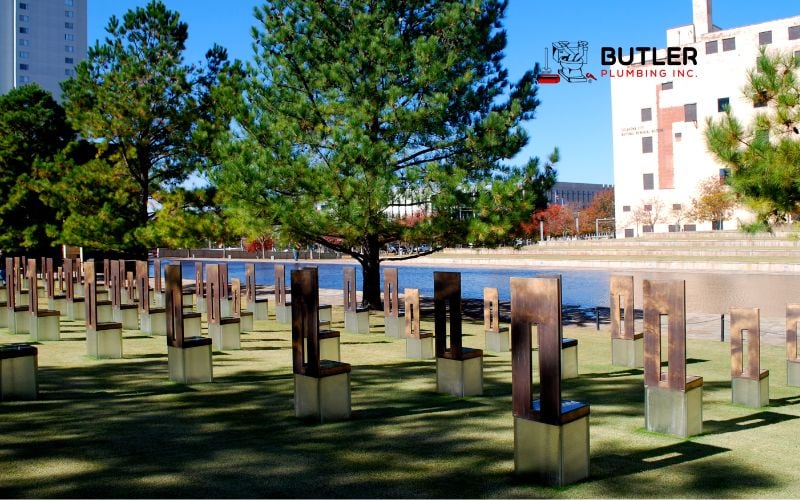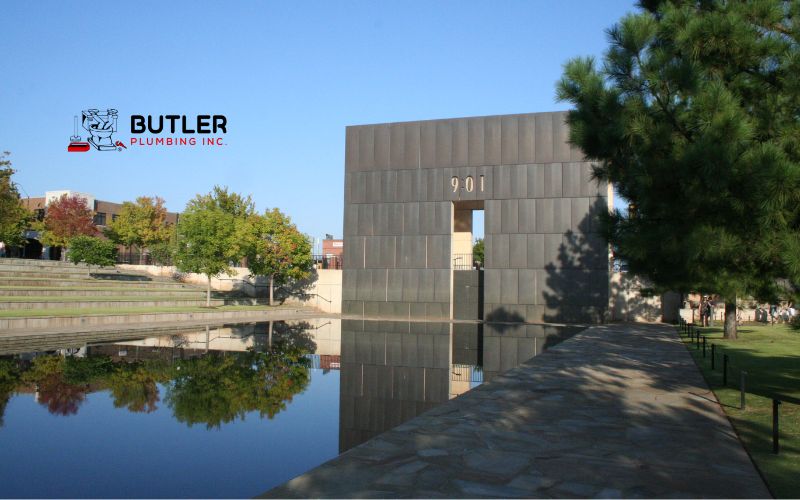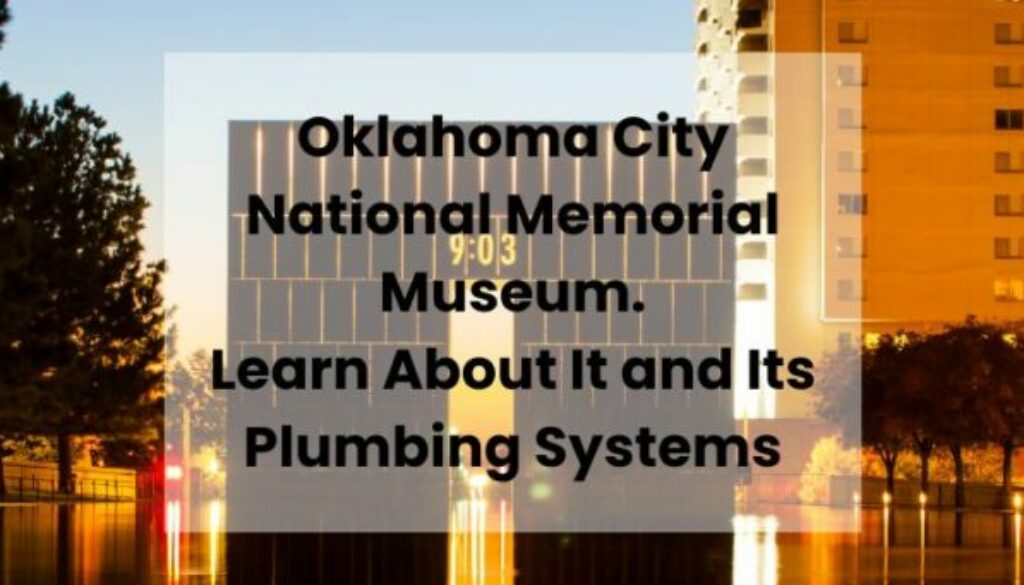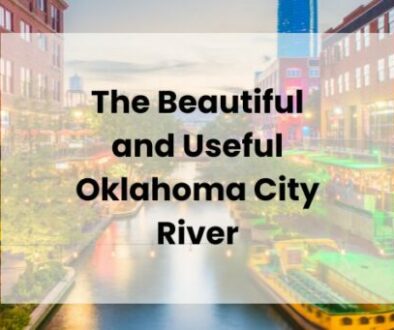Oklahoma City National Memorial Museum: What You Must Know Including the Plumbing System
The Oklahoma City National Memorial Museum commemorates the tragic bombing of the Alfred P. Murrah Federal Building that took 168 lives, including 19 children, on April 19, 1995. Located just north of downtown Oklahoma City, the Memorial and Museum honors the victims, survivors, rescuers, and all affected by the attack.
The Memorial provides a place of quiet reflection on the Memorial grounds where the Murrah Building once stood, while the interactive Museum documents the events and aftermath through exhibits, artifacts, and personal mementos.
The general admission tickets to the Museum cost $15 for adults and $12 for youth.
The Museum is open daily from 9 am-6 pm in summer and 9 am-5 pm in winter.
Plumbing plays a crucial role in maintaining the reflecting pool at the Oklahoma City National Memorial and Museum. The system ensures a continuous flow of water, allowing the pool to sustain its serene and reflective surface. Through a well-designed plumbing infrastructure, water is circulated, filtered, and treated to maintain optimal clarity and cleanliness, contributing to the peaceful ambiance of the memorial. The efficient plumbing system not only supports the aesthetic function of the reflecting pool but also symbolizes the resilience and healing spirit embodied by the memorial itself.
By providing an opportunity to reflect on the past and build a peaceful future, the Oklahoma City National Memorial Museum serves as a meaningful tribute to those impacted by the bombing.
Where is the Oklahoma City National Memorial Museum Located?

The Oklahoma City National Memorial Museum is located at 620 N. Harvey Avenue in Oklahoma City, Oklahoma. The coordinates are 35.4764° N latitude and 97.5160° W longitude.
What is the History of the Oklahoma City National Memorial and Museum?
The Oklahoma City bombing occurred on April 19, 1995, when Timothy McVeigh detonated a truck bomb outside the Alfred P. Murrah Federal Building, killing 168 people and injuring over 800 others. In the months after the attack, Oklahoma City Mayor Ron Norick appointed a 350-member task force to determine how to memorialize the victims.
In 1997, the task force recommended building an outdoor memorial on the site of the Murrah Building, as well as a memorial museum and an institute focused on preventing terrorism. That same year, President Bill Clinton signed legislation authorizing the Oklahoma City National Memorial.
The outdoor memorial was dedicated on April 19, 2000, the 5th anniversary of the bombing.
On February 19, 2001, the indoor Memorial Museum was dedicated. It occupies the Journal Record Building adjacent to the memorial site and uses interactive exhibits to tell the stories of those impacted.
Today, the Oklahoma City National Memorial and Museum is maintained by a non-profit foundation and welcomes over 500,000 visitors annually to learn about the events of April 19, 1995.
What Does the Outdoor Symbolic Memorial Consist Of?

The outdoor symbolic memorial features the Gates of Time, twin monumental bronze gates that frame the moment of destruction at 9:02 AM, and the Reflecting Pool. The Reflecting Pool occupies the footprint of what was once NW 5th Street, with gently flowing water and a mirror-like surface.
The Field of Empty Chairs includes 168 chairs to represent each victim, arranged by the floor they were located on in the Murrah Building. The Survivor Tree is an American elm that survived the blast and stands today as a living symbol of resilience.
What Are the Main Exhibits Inside the Oklahoma City National Memorial and Museum?
The main exhibits inside the Oklahoma City National Memorial and Museum include:
- The Symbolic Memorial Exhibit – Features artifacts from the outdoor memorial including a damaged granite segment from the Journal Record Building and the original Survivor Tree.
- The Day of April 19th – Uses artifacts, images, audio, and video to take visitors minute-by-minute through the events of April 19, 1995.
- The Investigation Gallery – Details the exhaustive investigation by law enforcement and the court proceedings.
- The Gallery of Honor – Honors each of the 168 victims with photographs, mementos, and stories about their lives.
- The Children’s Area is designed for young visitors to learn about the memorial in an age-appropriate way.
- The Rescuers Orchard – Honors the rescuers who saved lives and helped in the aftermath.
What Are The Opening Hours of the Oklahoma City National Memorial and Museum?
- The Outdoor Symbolic Memorial is open 24 hours a day, 365 days a year.
- Park Rangers are on-site daily from 8:30 AM to 5:00 PM, except Thanksgiving, Christmas, and New Year’s Day.
- The Memorial Museum hours are:
- Monday – Saturday: 9:00 AM – 5:00 PM
- Sunday: 12:00 PM – 5:00 PM
- Closed on Easter Day, Thanksgiving Day, Christmas Eve, Christmas Day and New Year’s Day.
How Can I Get Tickets to the Oklahoma City National Memorial and Museum?
Tickets to the Oklahoma City National Memorial and Museum can be purchased online at memorialmuseum.com or at the ticket office on-site.
How Much Are The Tickets?
General admission tickets are $15 for adults, $13 for seniors and military, and $12 for students. Children under 5 are free.
What Else Is There to See at the Memorial Site?

The reflecting pool is another key feature of the memorial site. The shallow pool runs east to west down the center of the memorial on what was once 5th Street, where the truck carrying the bomb was parked. The placid water provides a peaceful setting for quiet reflection and remembrance.
Proper plumbing is crucial to keep the reflecting pool functioning. The pool requires a recirculation system to filter and treat the water, as well as pumps to circulate the water and create a tranquil flowing effect. Skilled plumbing services ensure the reflecting pool continues to be an impactful part of the memorial experience.
What Are the Key Events Held at the Museum?
The key events held annually at the Oklahoma City National Memorial and Museum are:
- April 19th Remembrance Ceremony
- Oklahoma City Memorial Marathon
- Holiday Memorial Tree Lighting
- Reading of the Names
- Museum Anniversary Events
- Ongoing educational programs, events, and exhibits for students and adults.

How Can I Get to the Oklahoma City National Memorial and Museum?
Here are directions to the Oklahoma City National Memorial and Museum:
From Oklahoma City International Airport:
- Exit the airport and follow the signs to I-44 E/I-40 E
- Take I-44 E/I-40 E for about 8 miles
- Take exit 125 for NW 4th St toward Downtown
- Turn left onto NW 4th St and go 0.2 miles
- Turn right onto N Harvey Ave, the museum will be on your right
From Downtown Oklahoma City:
- Head north on N Broadway Ave toward NW 4th St
- Turn left onto NW 4th St and go 0.7 miles
- Turn right onto N Harvey Ave, the museum will be on your right
What Should I Know Before Visiting?
Here are some key things to know before visiting the Oklahoma City National Memorial and Museum:
- The memorial receives over 500,000 visitors each year, so advance ticket reservations are recommended to ensure availability.
- The outdoor memorial layout consists of key elements like the Gates of Time, Reflecting Pool, Survivor Tree, Field of Empty Chairs, Children’s Area and Memorial Fence.
- The Survivor Tree is an American elm that withstood the bombing and still stands today as a symbol of resilience.
- Plan for 1-2 hours to fully experience the memorial museum exhibits and artifacts.
- The memorial is open 24/7 but the museum hours are 9am-5pm daily, closed on major holidays.
- Admission is $15 for adults, with discounts for seniors, students, and children. Parking is free.
- Photography is allowed but selfie sticks and tripods are prohibited.
What are the Benefits for the Oklahoma National Memorial and Museum of having a Plumbing System?
Several areas of the Oklahoma National Memorial and Museum benefit from having a plumbing system. These benefits include:
- The reflecting pool benefits from plumbing by having a water supply and drainage system to keep the pool filled and circulating. Plumbing allows the reflecting pool to be an iconic part of the memorial.
- Restrooms benefit from plumbing by having running water for sinks, toilets, urinals, etc. This allows the memorial to accommodate visitors comfortably.
- Drinking fountains benefit from plumbing by having clean water available for visitors to stay hydrated. Fountains powered by plumbing make water conveniently accessible.
What Areas of the Oklahoma City National Memorial Museum Require Plumbing?
The main areas of the Oklahoma City National Memorial Museum that require plumbing include:
- Reflecting Pool
- Restrooms – For water supply, drainage, toilets, sinks, etc.
- Drinking fountains
- Café or food service areas
- Custodial closets and janitorial sinks
- Fire sprinkler systems
- Heating and cooling systems (HVAC)
- Outdoor memorial reflecting pool – For water circulation, filtration, drainage
- Any water features or fountains
- Utility and mechanical rooms
Proper plumbing installation and maintenance are critical in these areas to allow the memorial museum to operate smoothly.
Does the Reflecting Pool Use a Plumbing System?
The reflecting pool at the Oklahoma City National Memorial does use a plumbing system.
To keep the water clean and circulating properly, it requires a recirculation system to filter and treat the water. It also needs pumps to create a tranquil flowing effect across the pool’s surface.
Does the Reflecting Pool Use a Drainage System?
The reflecting pool at the Oklahoma City National Memorial does use a drainage system. A well-designed drainage system is critical. The pool likely has drains along the bottom to allow easy draining for cleaning and maintenance. Efficient drainage prevents stagnant water and allows any rainfall to be directed away, rather than overflowing the pool.
Are there rivers in Oklahoma City that are part of the plumbing system of the city?
Yes. The Oklahoma River is part of the plumbing system by helping the City controlling floods in central Oklahoma City when they occur.




